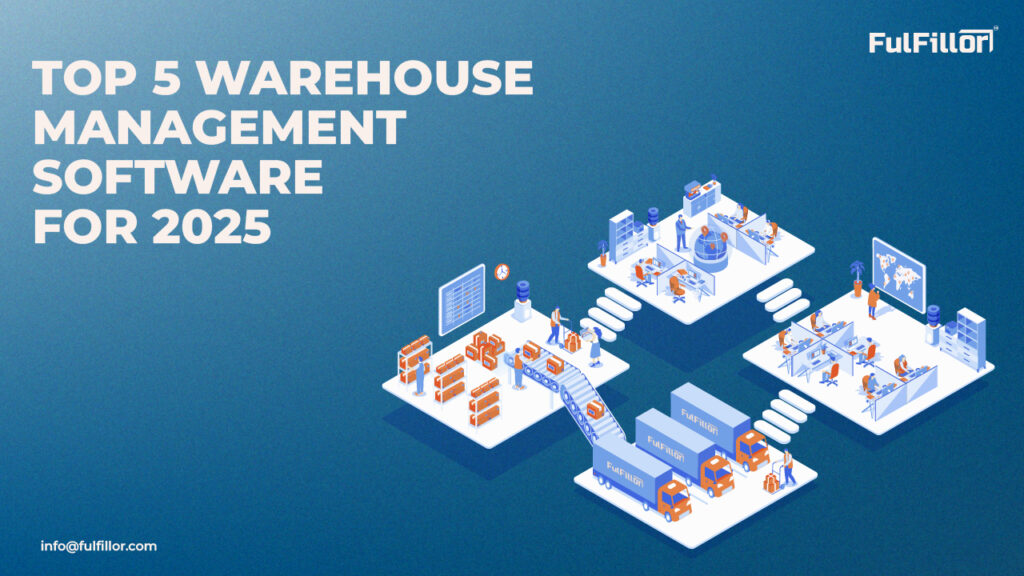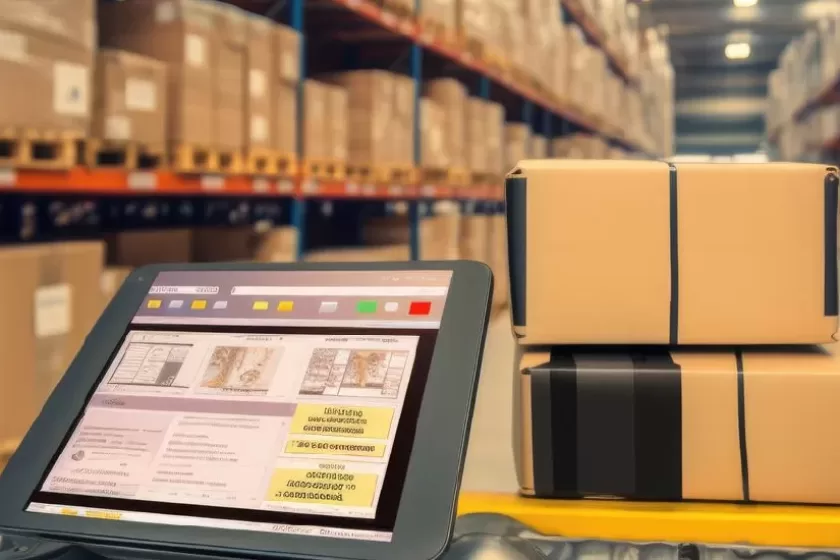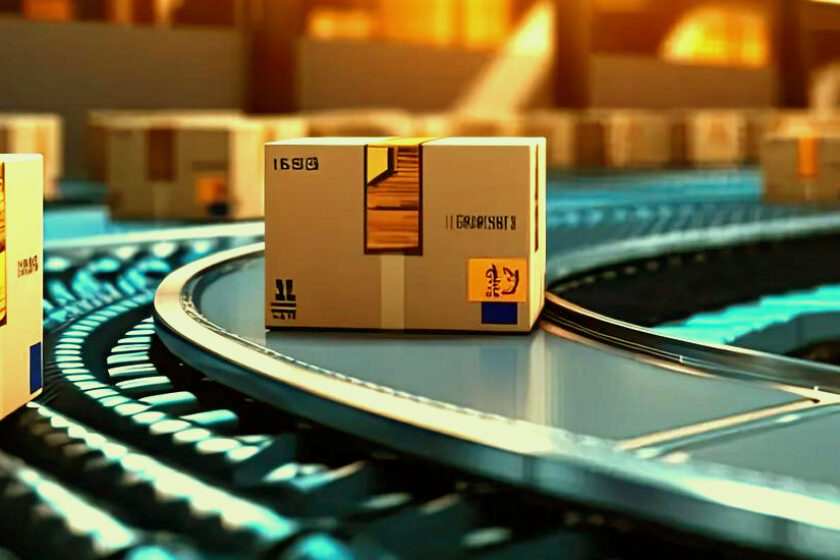
Is Your Warehouse Suffering From Operational Woes?
With the increasing significance of e-commerce, some organizations encounter problems like improper stock control, long time to process orders, high expenses, and no compatibility between systems. These inefficiencies not only create delays but also have unhappy customers, further increasing revenue loss. Here in this blog, we will talk about the top 5 warehouse management software for 2025.
If these challenges sound familiar to your organization then you are not alone. As the global supply chains are being enhanced and consumers are becoming progressively demanding, businesses need better solutions.
Welcome Warehouse Management Systems (WMS) – the core of every modern warehousing enterprise. But with numerous solutions available, how one can choose the best solution available in the market? This article aims to focus more on the five best WMS solutions for 2025 to guide you in choosing the right solution for your enterprise.
So let’s delve in!
Why Does Your Business Need a WMS in 2025?
A Warehouse Management System, abbreviated as WMS enhances operations daily through efficient storage management, order management, and shipping processes. Grand View Research estimated that the WMS market size can grow to $11.08 billion by 2030 while highlighting the importance of WMS in today’s business environment.
Key Features of an Ideal WMS:
- Real-Time Inventory Management: It enables tracking of stock movement making provision of inventory with the right stocks and avoiding overstocking or having stock-out situations.
- Order Fulfillment: WMS helps in picking, packing, shipping as well as returns, while eliminating manual inconsistencies.
- Integration Capabilities: Integration with various e-commerce platforms, shipping carriers, and accounting solutions.
- Data Analytics: Solutions for decision-making to improve processes.
- Scalability and Flexibility: It can respond well to new business requirements, as well as expand effectively.
Factors to Consider When Selecting a WMS
When evaluating WMS options, keep these factors in mind:

- Scalability: Make sure the system can develop as your business expands.
- Integration: Ensure software integrates well with your current software, marketplaces, and delivery services companies.
- Ease of Use: An easy-to-use interface means it is rapidly adopted by your team.
- Customization: Adapt the software according to your particular operation requirements.
- Support: Availability of technical support and training is critical to ensure proper service delivery of projects.
The Top 5 Warehouse Management Software for 2025

1. Fulfillor
FulFillor is an advanced cloud-based WMS meant to revolutionize warehouse operations by automating them, making them integrated and customizable. It is suitable for all forms of business including both large and small enterprises, which makes it easy to work at any scale without much alteration. The features and benefits of Fulfillor 3PL Wms software makes it one of the best warehouse management software in 2025.
Key Features:
- Real-Time Inventory Management: Fulfillor provides clear stock control and eliminates cases of stockouts and overstocking, hence improving the accuracy of order fulfillment.
- Omnichannel Integration: Works perfectly well with leading platforms such as Shopify, Amazon, eBay, etc. This leads to better centralized control of inventories and orders across all the selling platforms.
- Advanced Analytics: Helps in collecting data regarding the movement of stock, trends in orders, and the performance of the employees, which will help in making some better decisions.
- Reverse Logistics: Great for returns management as it has automated workflows for refunds, replacement, or if you want to restock.
Benefits:
- Reorganize warehouse space and stock to reduce handling times, providing better space utilization.
- Semi automates activities such as labeling and reporting activities since they are repetitive and may at times cause delays.
- Has lower overhead costs and operates efficiently since most of the IT infrastructure is hosted under the cloud solution.
2. Increff WMS
Increff is the cutting-edge WMS tailored for Direct-to-Consumer (D2C), retailers, and 3PL sectors. It provides accurate stock tracking and integrated multi-channel order management, which guarantees efficiency and effectiveness when processing orders.
Key Features:
- Provides real-time data tracking for batch control, materials restocking, and making inventory transactions free from error.
- It has an effective order management function that manages order picking, packaging, and dispatching to minimize order cycle times.
- Fits all sorts of businesses and can easily be scaled and integrated with other systems for flexibility.
- This product has a unique 100% Scan-Based Tracking that provides full visibility, and tracking of inventory and rejected items.
Benefits:
- Helps in performing accurate inventory checks using recorded data with scanning up to 100 percent.
- It also supports rapid deployment within seven days with little or no training needed.
- Flexible to growth and connects easily to other applications.
3. SAP Extended Warehouse Management (EWM)
SAP EWM is a versatile WMS and is integrated with other Sap modules and therefore it is suitable for organizations with supply chain management needs.Its broad characteristics such as order fulfillment as well as clean supply chain optimization make it among the most suitable for modern warehouses.
Key Features:
- Has flexible deployment options: The On-site and Off-site implementations
- Creates compatibility with robotics systems and automated warehouse picking that speeds up the overall process with minimal mistakes.
- QM and PM are integrated into this framework, enhancing real-time overcontrol of quality and production.
- Effectively coordinates the workload by assigning tasks and optimizes the labor productivity of work.
- Real-time operation control of automated warehouse equipment
Benefits:
- Manage both inbound and outbound logistics effectively by providing options to put away items, pick them, and ship them.
- Enhance world operations synchronization with customs tools and visibility across multiple locations.
- Eliminate mistakes and slow down with immediate data synchronization and automatically reorder signals .
4. Unicommerce
Unicommerce is built for e-commerce ventures, which provides features that help with managing orders across multiple channels and inventory. It helps over 6000 warehouses across the world and is especially suitable for businesses that large scale and convenient solutions.
Key Features:
- Centralized Inventory with near real-time synchronization across geographically dispersed warehouses
- Reduces order processing time through automation of picking, packing, and dispatching.
- Optimizes the returns process with reverse logistics for automated refunds and replacements.
- Integrates with ERP systems and platforms such as Amazon, Flipkart, and Myntra.
Benefits:
- Eliminating work blunders by encouraging the use of automated workflows.
- Increasing customer satisfaction with the right stock availability information and proper delivery times.
- It’s about providing reliable analytics for monitoring sales dynamics and improving the frequency of restocking.
5. Infor ® WMS
The main features that set Infor WMS apart are, for example, the 3D visualization of the warehouses and the intelligent staff scheduling. Due to its emphasis on smooth and swift functioning, it is best suited for those sectors that can necessitate fast procedures.
Key Features
- Its 3D Visual Mapping enables the manager to view the layout of the warehouse in real-time.
- Permits storage location allocations with dynamic slotting derived from the item demand.
- Has Integrated Labor Management, intelligent workforce tracking, performance and productivity monitoring, and optimization of the workforce schedule.
- Provides tools for forecasting the availability of stock out of stock to enable one to be prepared.
Benefits:
- Automated picking and packing processes can potentially increase order accuracy by up to 99 percent.
- Since tasks are prioritized in real-time, it helps in improving employees’ productivity.
- Reduce cycle times of order processing and enhance customer satisfaction through operational transparency.
Conclusion
As enterprises get ready for 2025, the selection of Warehouse Management Software plays an important role in working productivity and customer satisfaction. Consider your specific needs as a company—what should the solution scale to, and how it should integrate and function in practice? Deciding on the best WMS to adopt in the year 2025 will be essential to the overall operations, orders, and satisfaction of the customers because e-commerce will become more competitive in the next two years.
Why FulFillor is the Best Choice for Your Business?
Comparing all the 5 WMS solutions, it is worth stating that FulFillor is one of the most functional and easy-to-use software. Due to its SaaS design, coupled with a vast line of integration options, it is perfect for businesses in various fields. FulFillor empowers users with:
- Easy expansion for businesses that are expanding at a fast pace.
- Live data analysis for enhanced and better decision-making.
- Simplified reverse logistics with improved customer satisfaction.
- Cost-effective because it reduces the requirement of spending huge amounts of money and resources on IT infrastructure.
Are you prepared to transform your business into a future-oriented one?
Get in touch with FulFillor today and take your warehousing needs to the next level.




